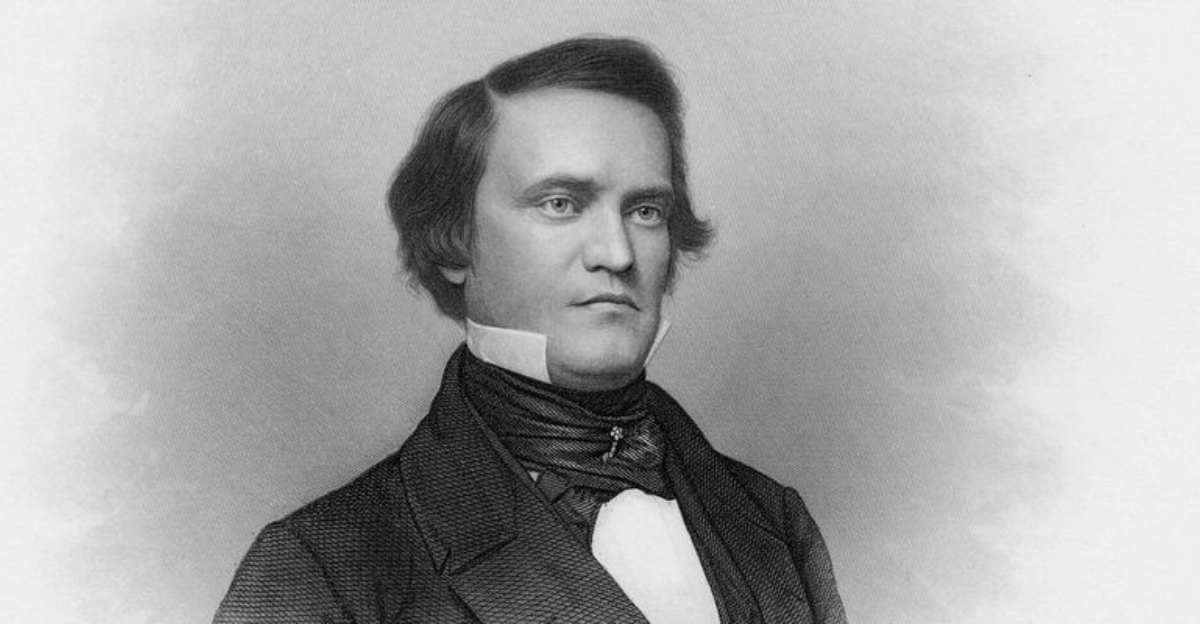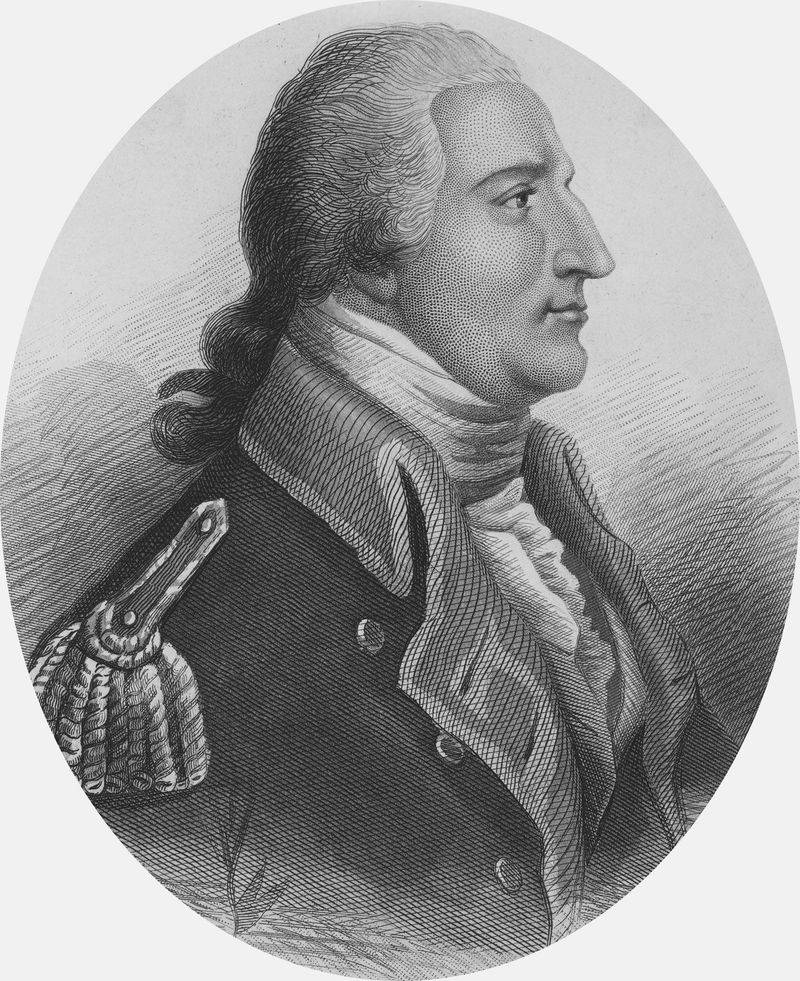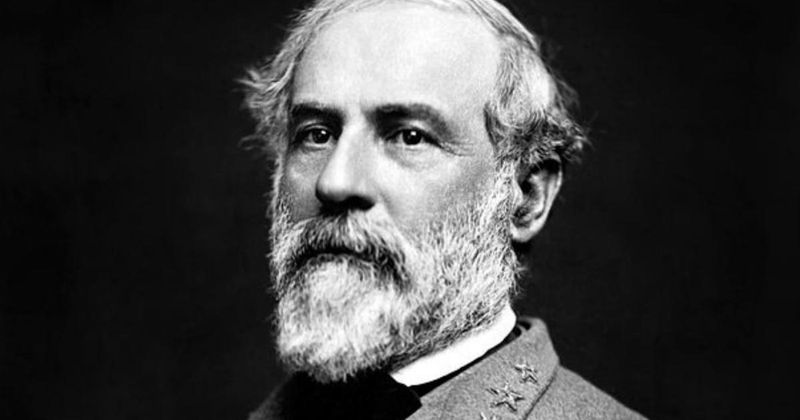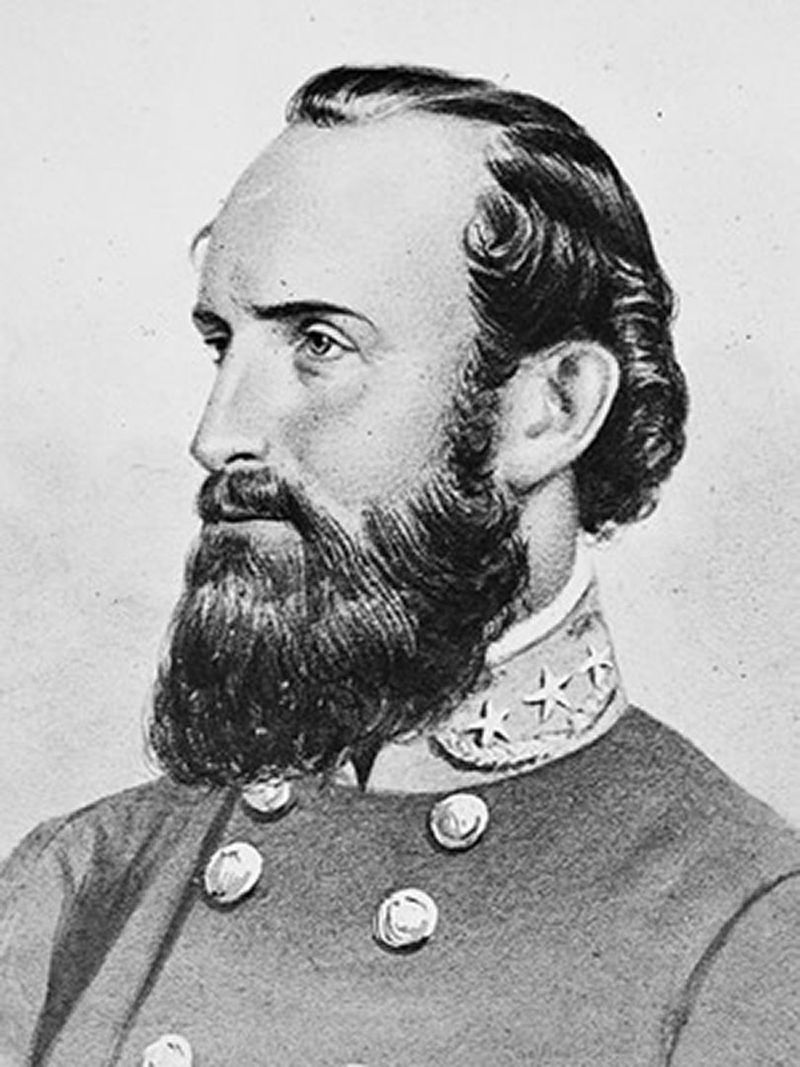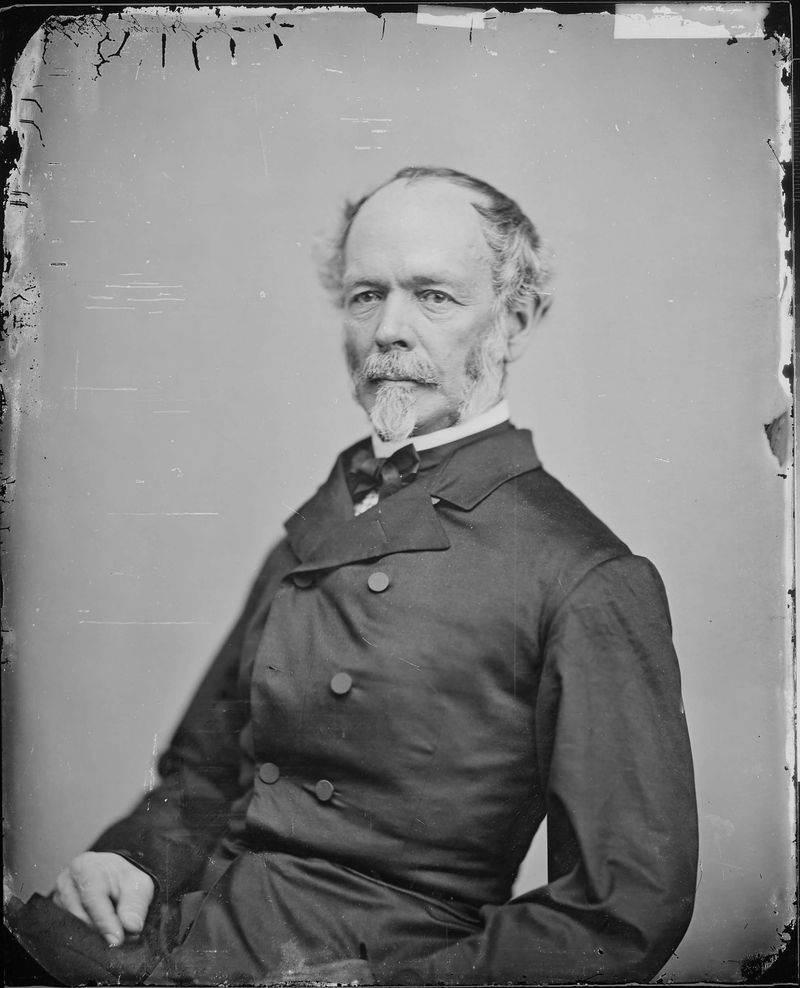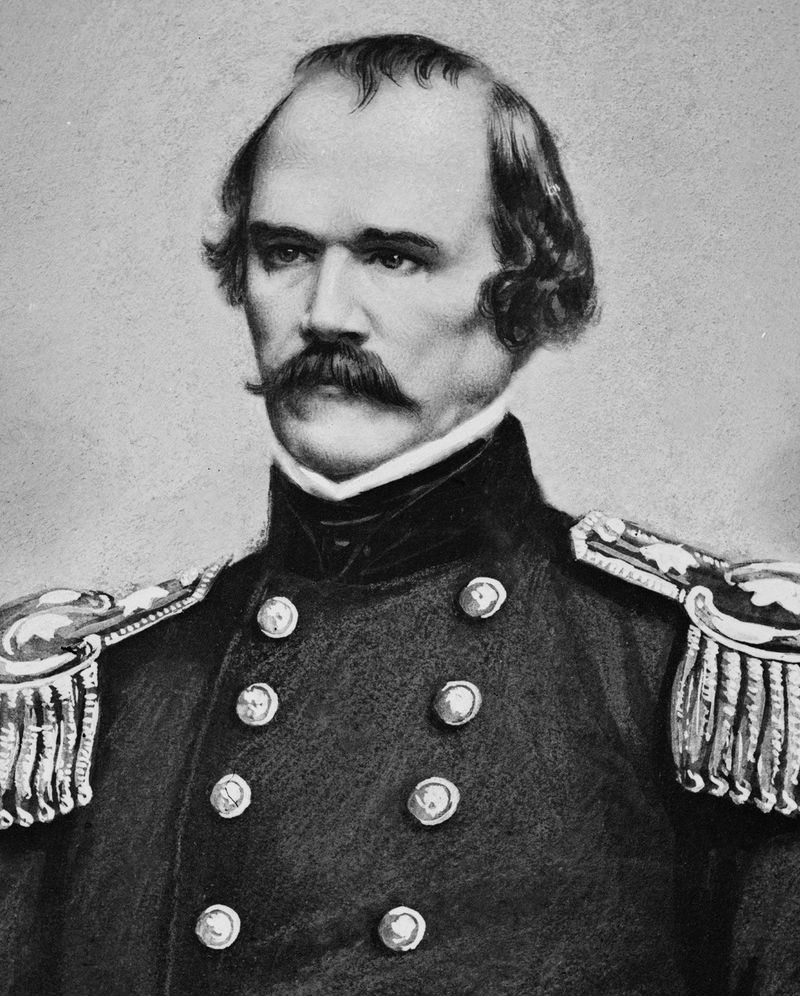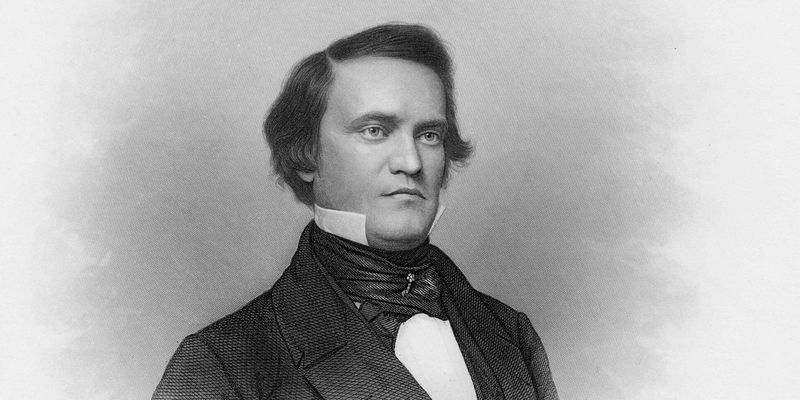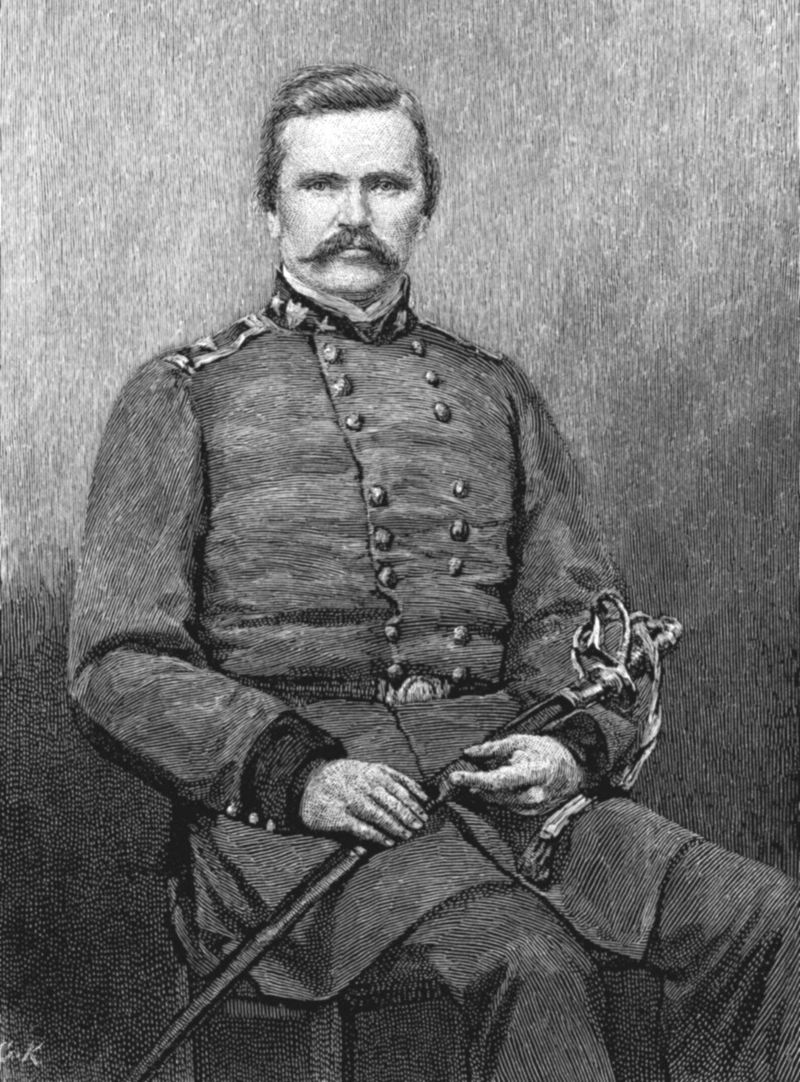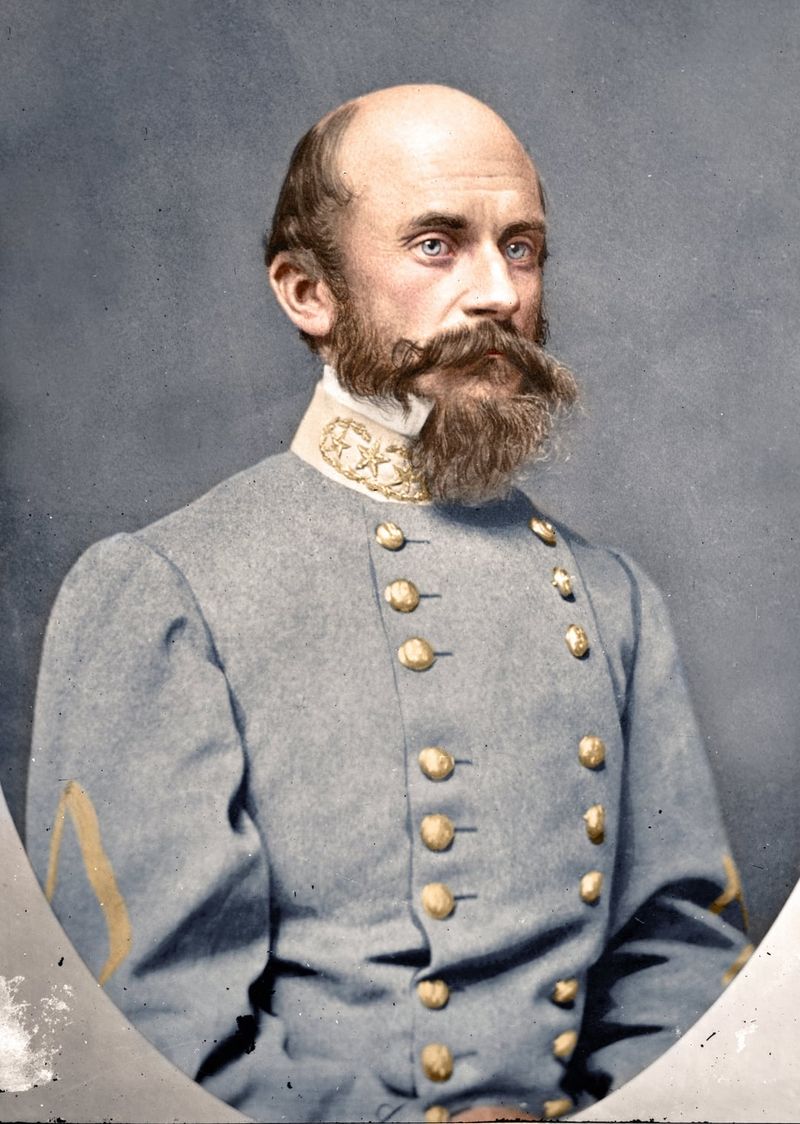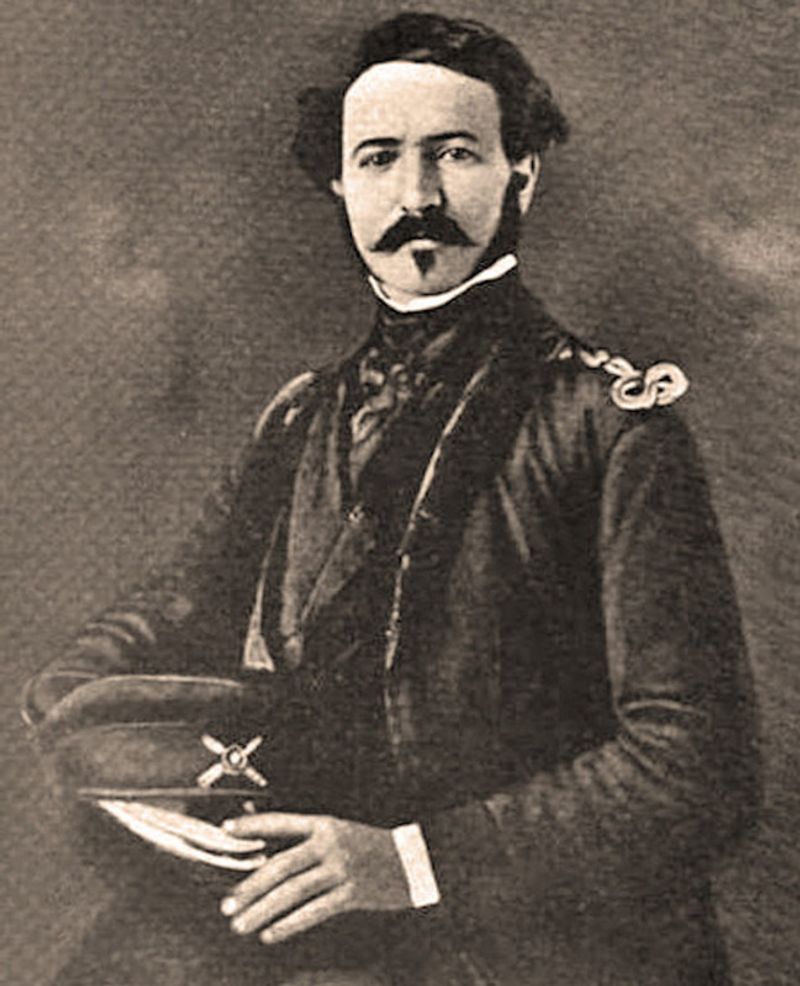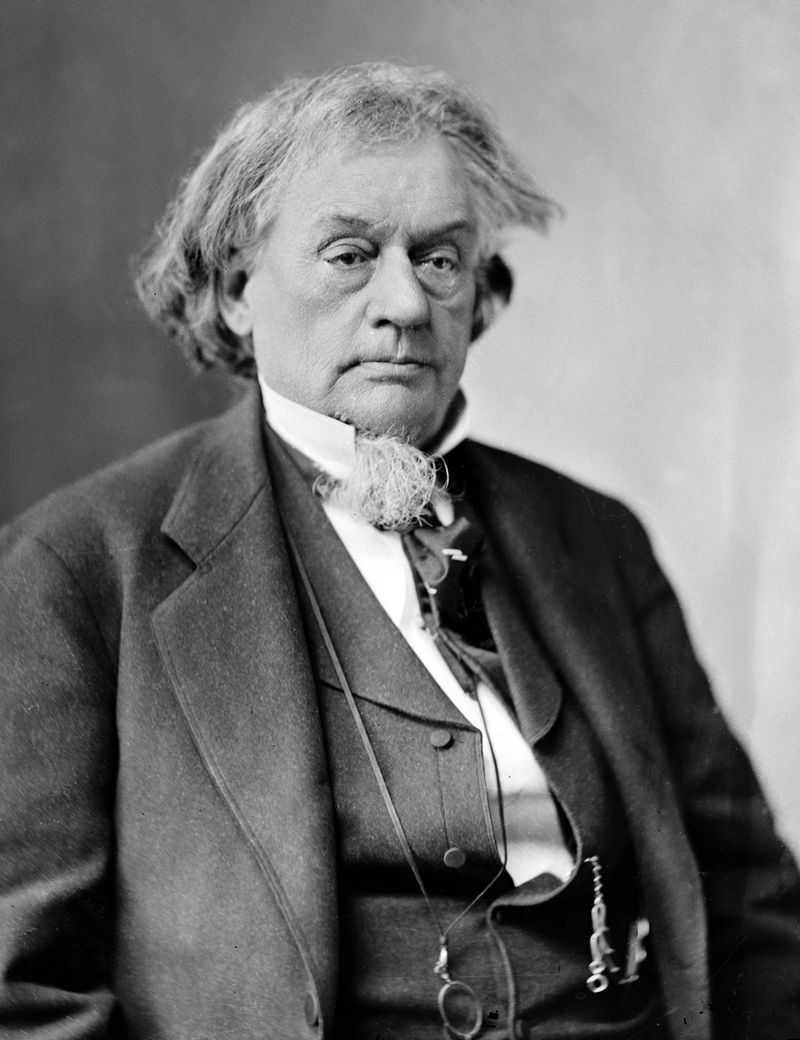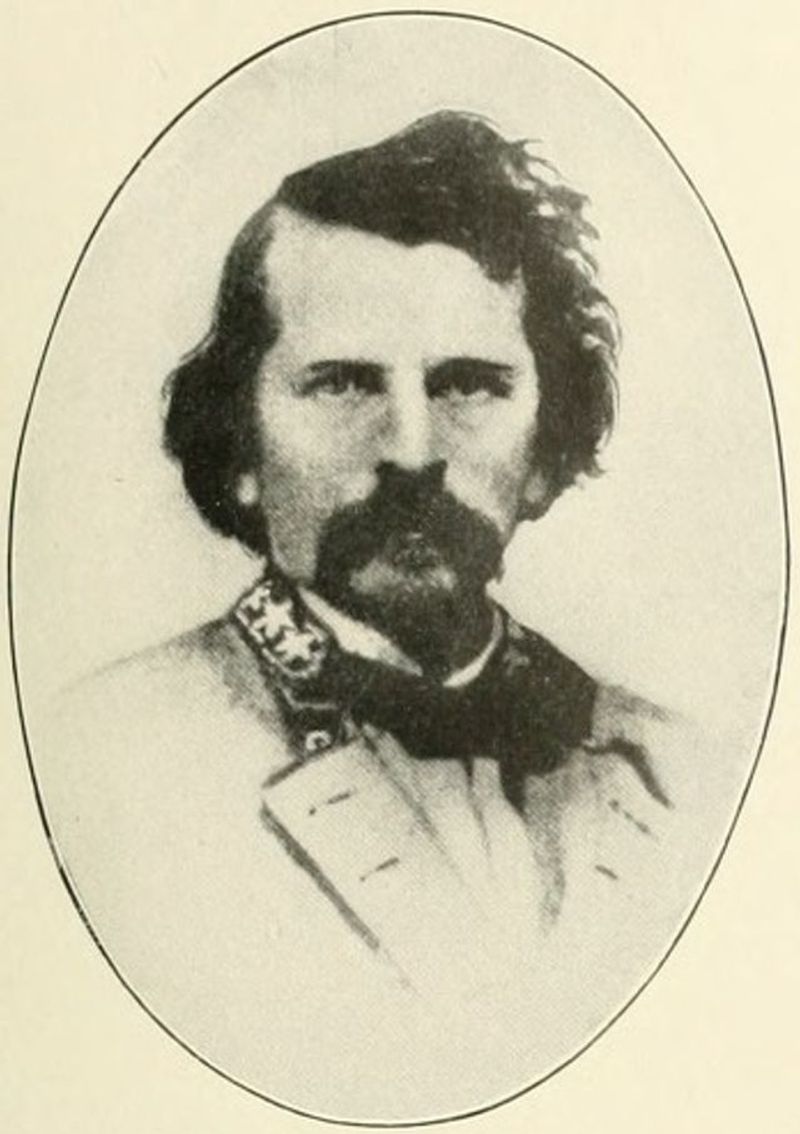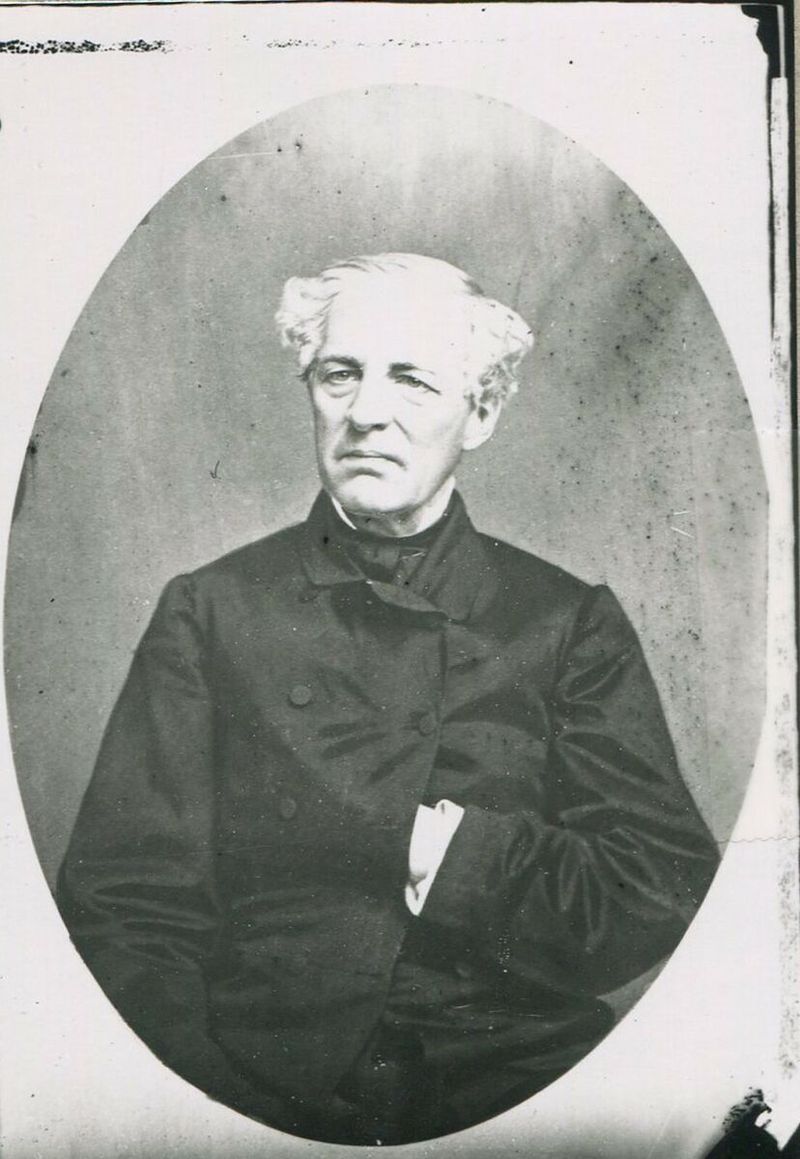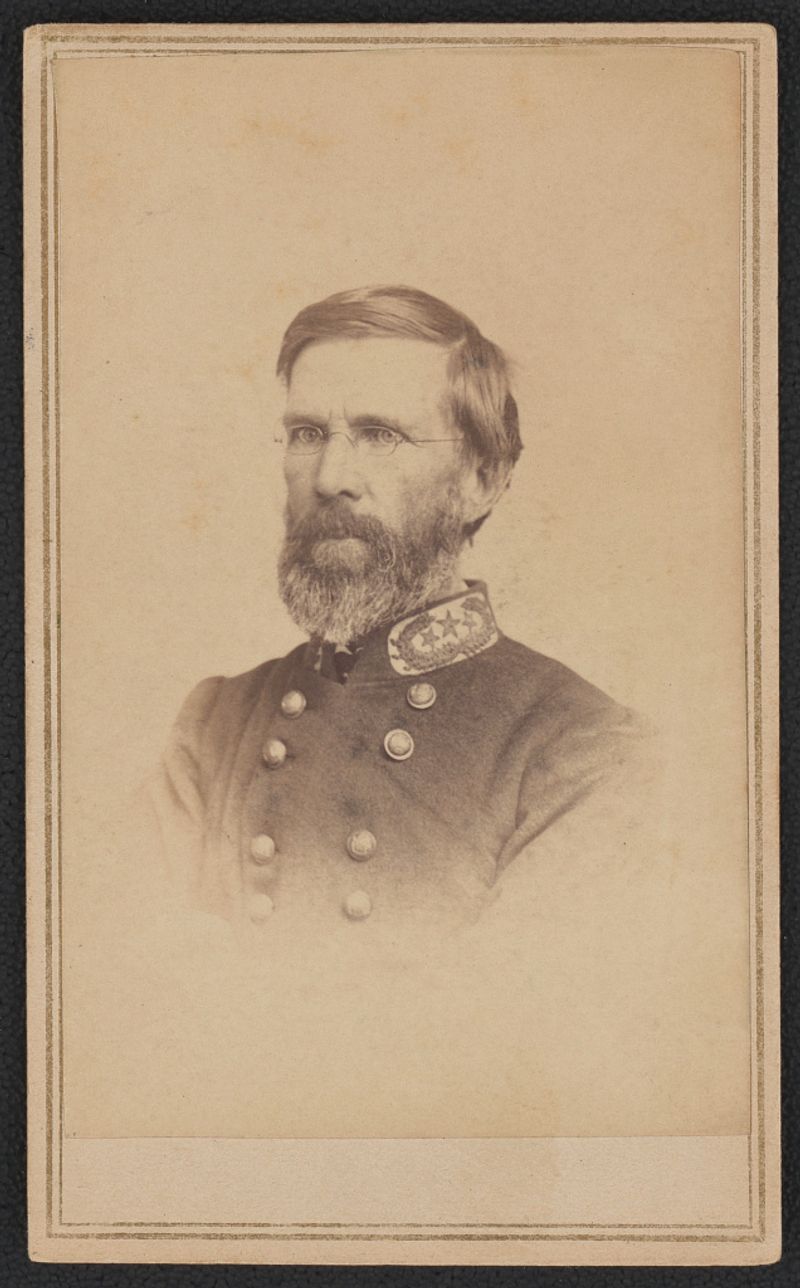Throughout American history, some of our most talented military leaders made the shocking decision to betray their country. These commanders, once sworn to protect the United States, instead chose paths that led them to fight against the very nation they had served. Their stories reveal complex motivations including regional loyalty, political disagreements, and personal grievances that drove them to break their oaths and face the judgment of history.
1. Benedict Arnold: America’s Most Infamous Traitor
Once celebrated as one of Washington’s most brilliant generals, Benedict Arnold’s name became synonymous with betrayal. His daring battlefield exploits at Saratoga helped secure American independence before resentment and financial troubles poisoned his patriotism.
In 1780, Arnold plotted to surrender the critical fortress at West Point to British forces for £20,000. When his scheme was discovered, Arnold fled to British protection, later leading troops against his former comrades.
Though his military genius is undeniable, Arnold died in London in 1801—broke, scorned by his British allies, and forever reviled in American memory as the standard by which all future traitors would be measured.
2. Robert E. Lee: Torn Between Nation and State
Few figures embody America’s divided loyalties more than Robert E. Lee. A West Point graduate and decorated Mexican-American War veteran, Lee faced an agonizing choice when Virginia seceded in 1861.
Though personally opposed to secession and slavery, Lee declined Lincoln’s offer to command Union forces. “I cannot raise my hand against my birthplace, my home, my children,” he explained before accepting command of Virginia’s forces and eventually the Confederate Army.
His tactical brilliance extended the war for years despite the North’s advantages. After surrender at Appomattox, Lee urged reconciliation, spending his final years as president of Washington College (now Washington and Lee University).
3. Thomas “Stonewall” Jackson: The Devout Warrior
Before becoming a Confederate legend, Jackson taught physics and artillery tactics at Virginia Military Institute. His stern classroom demeanor and religious intensity earned him the nickname “Tom Fool” from cadets who mocked his eccentricities.
The sobriquet “Stonewall” came during First Bull Run when his brigade held firm “like a stone wall” against Union attacks. Jackson’s lightning-fast Valley Campaign of 1862 cemented his reputation as a military genius.
Accidentally shot by his own men at Chancellorsville in May 1863, Jackson’s final words reflected his steadfast faith: “Let us cross over the river and rest under the shade of the trees.” His death dealt a devastating blow to Confederate hopes.
4. James Longstreet: Lee’s Controversial “Old War Horse”
Nicknamed “Old War Horse” by Lee for his reliability, Longstreet proved one of the Confederacy’s most capable commanders. His friendship with Ulysses S. Grant predated the war—Longstreet had even served as best man at Grant’s wedding.
After the war, Longstreet committed the unforgivable sin in Southern eyes: he became a Republican, supported Reconstruction, and criticized Lee’s tactics at Gettysburg. Former comrades who had praised his wartime service now vilified him as a traitor twice over.
Despite the ostracism, Longstreet maintained his views until his death in 1904, insisting, “I was a soldier, fighting for my country as I understood it.”
5. Joseph E. Johnston: The Defensive Master
Johnston’s military career began brilliantly—graduating from West Point, earning commendations in the Mexican-American War, and rising to Quartermaster General of the U.S. Army. When Virginia seceded, Johnston resigned his commission, declaring, “I follow my state.”
His cautious defensive tactics frustrated Confederate President Jefferson Davis but likely saved thousands of Southern lives. Their notorious feud damaged the Confederate war effort, with Davis repeatedly passing Johnston over for promotion.
After the war, Johnston entered insurance and served in Congress. At Sherman’s funeral in 1891, he refused to wear a hat despite the cold rain, explaining, “If I were in his place and he standing here in mine, he would not put on his hat.” Johnston caught pneumonia and died weeks later.
6. Albert Sidney Johnston: The Fallen Prodigy
Jefferson Davis considered Albert Sidney Johnston “the greatest soldier, the ablest man, civil or military, Confederate or Union.” His sterling reputation preceded him—Yale graduate, veteran of three armies (Texas, U.S., and Confederate), and successful commander on multiple frontiers.
When war erupted, Johnston commanded all Confederate forces in the Western Theater. At Shiloh in April 1862, he personally led a charge to break Union lines, telling soldiers, “I will lead you!”
Shot in the leg during the battle, Johnston bled to death, unaware the bullet had severed an artery. His death at the moment of apparent victory devastated Southern morale and deprived the Confederacy of perhaps its most naturally gifted commander.
7. John C. Breckinridge: From Vice President to Rebel General
Breckinridge’s path to treason was uniquely dramatic—he served as Vice President under James Buchanan just before the Civil War. After losing the 1860 presidential election, he returned to Kentucky and won election to the U.S. Senate.
When Kentucky declared for the Union, Breckinridge delivered a fiery Senate speech denouncing Lincoln’s policies before fleeing south under threat of arrest. He exchanged his politician’s suit for a general’s uniform, leading troops at Shiloh, Stones River, and Chickamauga.
As Confederate Secretary of War in 1865, Breckinridge recognized the inevitable and advocated surrender to prevent guerrilla warfare. After years in exile, he returned under amnesty to practice law, declaring, “I have no regrets for my conduct in the war.”
8. George B. Crittenden: The Black Sheep of a Union Family
George Crittenden’s defection cut especially deep through one prominent Kentucky family. While his father John served as a U.S. Senator and his brother Thomas commanded Union forces, George chose the Confederacy—creating a house literally divided by war.
A West Point graduate with Mexican War experience, Crittenden initially showed promise but faltered after a disastrous defeat at Mill Springs in 1862. Accusations of drunkenness on duty led to his removal from field command.
Family gatherings after the war must have been awkward indeed. While his Union general brother Thomas received honors and promotions, George spent his final years in relative obscurity as state librarian in Kentucky, his once-promising military career overshadowed by failure and divided loyalties.
9. Simon Bolivar Buckner Sr.: The Surrendering General
Named after South American liberator Simón Bolívar, Buckner ironically became famous for surrender. A Mexican War veteran and former superintendent of Kentucky’s militia, he joined the Confederacy despite close friendship with Ulysses S. Grant.
In February 1862, Buckner commanded Fort Donelson when Grant demanded “unconditional surrender.” Buckner’s dignified capitulation made him the first Confederate general to surrender an army—and Grant’s terms entered American vocabulary as “Unconditional Surrender Grant.”
After exchange, Buckner fought at Chickamauga and accompanied General Lee to surrender at Appomattox. He later served as Kentucky’s governor and ran for vice president, proving that surrendering with honor could lead to post-war redemption unavailable to many former Confederates.
10. Richard Ewell: Lee’s “Old Bald Head”
Ewell’s peculiar appearance—bald head, prominent nose, and bulging eyes—earned him the nickname “Old Bald Head” from his troops. A career Army officer and Mexican War veteran, he resigned his commission when Virginia seceded in 1861.
Initially successful under Stonewall Jackson, Ewell struggled after losing a leg at Groveton in 1862. He returned with a wooden leg and promotion to lieutenant general, but faltered at critical moments during the Gettysburg campaign.
At Sailor’s Creek in 1865, Ewell became the highest-ranking Confederate captured in battle. After the war, he farmed in Tennessee until his death in 1872, his legacy a complex mix of early brilliance and later hesitation that some historians argue cost Lee victory at Gettysburg.
11. John B. Magruder: The Theatrical Commander
Known as “Prince John” for his flamboyant style, Magruder loved theatrical performances almost as much as military ones. Before the war, he organized lavish parties and amateur theatricals at frontier posts, once even entertaining a young Lieutenant Ulysses Grant.
His flair for deception proved militarily valuable during the 1862 Peninsula Campaign. By marching the same troops repeatedly past observation points and creating fake artillery from painted logs (“Quaker guns”), Magruder convinced McClellan he faced a massive Confederate force.
After the war, Magruder refused to surrender, instead leading Confederate exiles to Mexico to serve Emperor Maximilian. He returned to the U.S. after amnesty, spending his final years in Houston where his elaborate funeral in 1871 reflected the showmanship that defined his life.
12. Robert Toombs: The Almost-President of the Confederacy
Toombs nearly became the Confederacy’s first president instead of Jefferson Davis. A fiery Georgia politician who declared he would “rather be a private in a free government than a king in a despotic one,” Toombs served as U.S. Senator before secession.
After briefly serving as Confederate Secretary of State, he resigned to become a brigadier general despite minimal military experience. His performance at Antietam proved respectable, but his combative personality and drinking habits limited his effectiveness.
Toombs spent his post-war years criticizing Davis and refusing to request a pardon from the U.S. government. When informed he couldn’t vote without taking a loyalty oath, he thundered, “Pardon! I have not pardoned the North yet!” He died unreconciled to Union victory in 1885.
13. Earl Van Dorn: The Flamboyant Cavalier
Van Dorn’s colorful personal life ultimately overshadowed his military contributions. A dashing West Point graduate nicknamed “Buck” for his wild behavior, he earned multiple brevet promotions in the Mexican War before resigning his U.S. commission in 1861.
His Confederate career proved uneven—suffering major defeats at Pea Ridge and Corinth before redeeming himself with successful cavalry raids. Jefferson Davis, his cousin by marriage, continued giving him commands despite mixed results.
Van Dorn’s death came not on the battlefield but in his headquarters in Spring Hill, Tennessee. In May 1863, he was shot by Dr. George Peters, a civilian who accused the general of carrying on an affair with his wife. His tombstone reads simply: “Here lies Earl Van Dorn, a soldier and a victim of private revenge.”
14. Samuel Cooper: The Forgotten Highest-Ranking Confederate
Despite being the highest-ranking Confederate general—senior even to Robert E. Lee—Cooper remains largely forgotten today. Born in New York, this unlikely Southern sympathizer served as U.S. Army Adjutant General before resigning in March 1861.
Cooper’s Virginia-born wife and Southern connections influenced his decision to join the Confederacy. Jefferson Davis immediately appointed him Adjutant and Inspector General, where his administrative expertise helped organize the Confederate military from scratch.
Unlike battlefield commanders who earned fame or infamy, Cooper worked behind the scenes throughout the war. After surrender, he lived in near poverty in Alexandria, Virginia until his death in 1876, his Northern birth and desk job ensuring his place as the highest-ranking yet least-remembered Confederate general.
15. Francis Henney Smith: The Educator of Confederate Officers
Smith’s betrayal wasn’t on the battlefield but in the classroom. As superintendent of Virginia Military Institute for 50 years (1839-1889), this West Point graduate and former U.S. Army officer shaped generations of military minds that would later fight against the Union.
When war erupted, Smith led VMI cadets to Richmond as drill instructors for new Confederate recruits. His most famous student, Stonewall Jackson, had taught under him before becoming a Southern legend.
The VMI Corps of Cadets, trained under Smith’s direction, fought as a unit at the Battle of New Market in 1864—the only time in American history that an entire student body fought as a military unit. Smith’s legacy lives on in the military education system he built that continues at VMI today.
